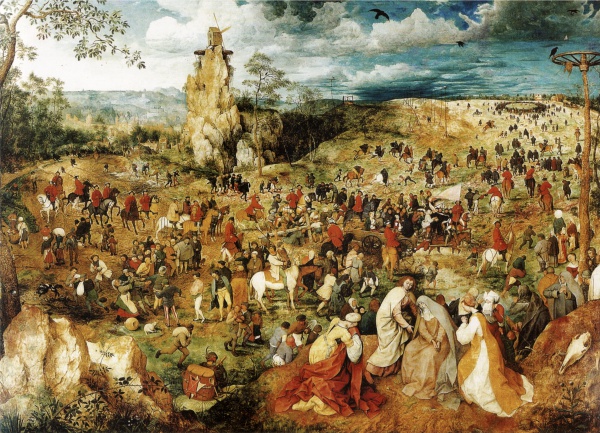Facts About The Procession to Calvary
"The Procession to Calvary" is a captivating oil painting by Pieter Bruegel the Elder, completed in 1564. This remarkable work, depicting Christ carrying the Cross amid a sprawling landscape, can be admired at the Kunsthistorisches Museum in Vienna. Known for its grand scale, the painting was commissioned by Niclaes Jonghelinck, a wealthy collector from Antwerp.
What makes this painting stand out is Bruegel's distinctive approach to a traditional religious scene. The landscape reflects his development as an artist, moving away from the conventional styles of the Antwerp school to embrace a more naturalistic touch.
In the painting, Bruegel masterfully captures several scenes: thieves being led to their execution, the mount of Golgotha with its crosses, and the indifferent crowds observing the event unfold. His meticulous attention to detail and the contemporary clothing of the figures add a layer of realism. Sacred figures, such as the Virgin Mary and Saint John, are depicted separately, absorbed in their own sorrow amidst the chaos.
This painting also inspired Michael Francis Gibson's book, "The Mill and the Cross" which was later adapted into a 2011 film directed by Lech Majewski. The movie brings the painting's historical context to life, featuring characters like Bruegel and Niclaes Jonghelinck. Starring Rutger Hauer, Michael York, and Charlotte Rampling, the film vividly portrays the world within Bruegel's masterpiece.

 Germany
Germany